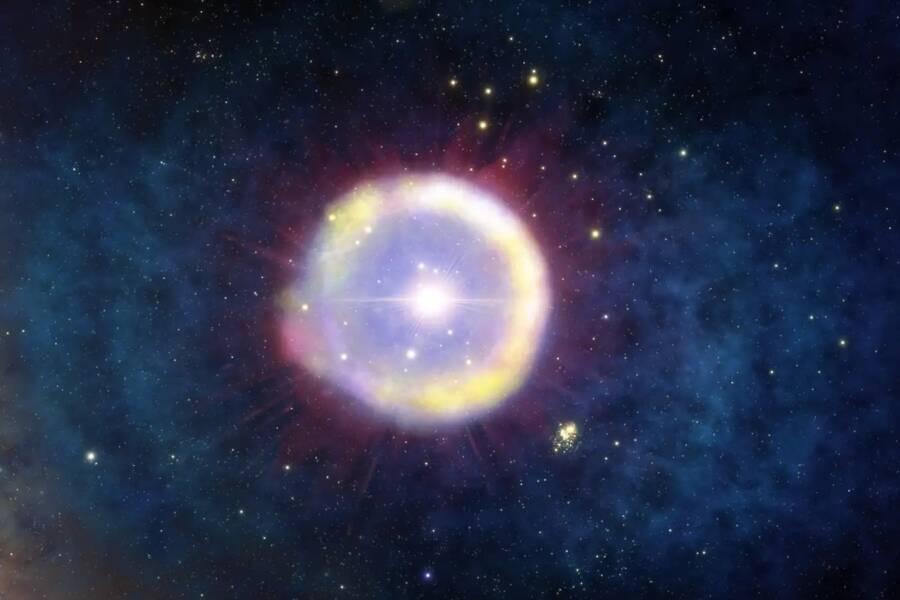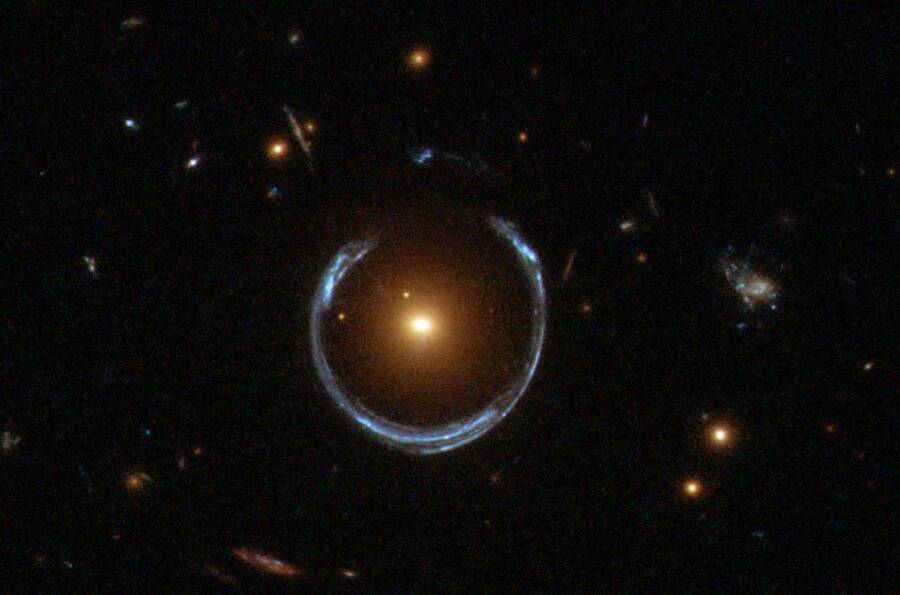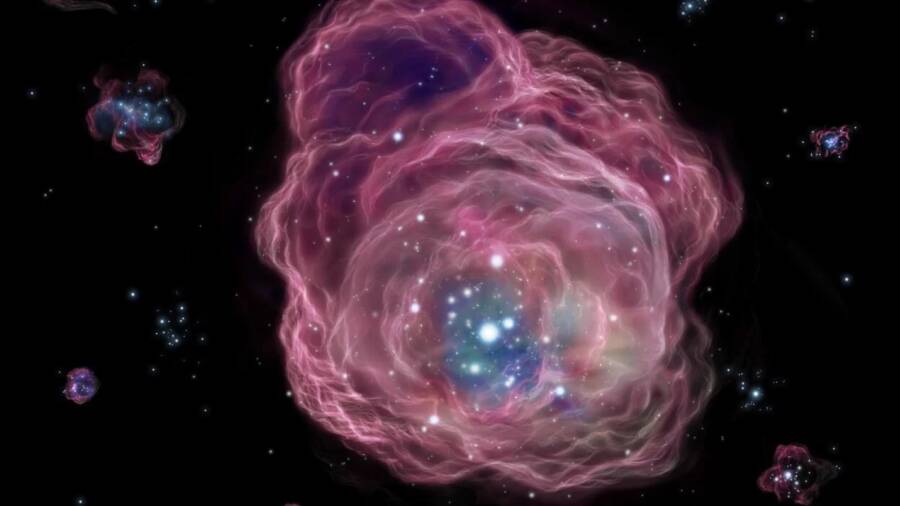If experts' theories are proven true, then these early stars could help reveal how galaxies form across the universe.

NOIRLab/NSF/AURA/J. da Silva/Spaceengine/M. ZamaniAn artist’s rendition of the universe’s first stars as they would have appeared roughly 100 million years after the Big Bang.
Astronomers using the James Webb Space Telescope believe they have discovered Population III stars — the universe’s first generation of stars that formed shortly after the Big Bang — according to a study published in The Astrophysical Journal Letters on Oct. 27, 2025.
The discovery centers on a distant star cluster called LAP1-B, located about 13 billion light-years from Earth. Researchers argue that this is the first cluster to satisfy all the major theoretical predictions about the earliest stars.
“If indeed Pop III, this is the first detection of these primordial stars,” lead author Eli Visbal, an astrophysicist at the University of Toledo, told Live Science. And these early stars could help reveal how galaxies form across the universe.
Inside The Potential Discovery Of The Universe’s Oldest Stars
Population III stars are theorized to have formed from only hydrogen and helium — the elements created during the Big Bang — combined with dark matter, the mysterious material that makes up a substantial portion of the universe. Scientists believe that these celestial bodies were massive in size, and probably much brighter and hotter than the Sun.
The team identified LAP1-B with the help of gravitational lensing, a phenomenon predicted by Albert Einstein, in which a massive foreground object warps space-time and magnifies distant background objects. The galaxy cluster MACS J0416 magnified LAP1-B, making the faint object visible to the James Webb Space Telescope.
“Where it happens to be situated, the light gets bent by gravity in such a way that it magnifies it like 100 times,” Visbal said in a statement from the University of Toledo. “LAP1-B would have ordinarily been impossible to see, even with the best telescopes, but we can see it because of this effect.”

NASA/ESA/HSTAn example of the gravitational lensing effect used to see distant galaxies.
Multiple pieces of evidence support the Population III identification. The stars’ spectra showed emission lines suggesting high-energy photons, which line up with theoretical predictions for these primordial stars. Analysis of the stars’ emission lines showed considerable stretching, matching up with the universe’s expansion over the course of billions of years.
As Visbal explained: “They teach us about the earliest stages of galaxy formation and evolution — for example, how metals pollute the initially pristine hydrogen and helium gas.”
The First Candidate To Meet All The Conditions For Population III Stars
The study argues that LAP1-B is the first candidate that meets the three critical conditions for Population III stars: It formed in a low-metallicity environment with temperatures suitable for star formation, it contains only a few big stars in a low-mass cluster, and it conforms to mathematical models for how star masses were distributed in the first generation of stars.
“It’s exciting,” said Visbal. “We’ve been working on theoretical models of these stars for a long time, so to now be on the precipice of perhaps direct detections is very exciting.”
Previous Population III candidates identified by the James Webb telescope, including stars in the galaxy GN-z11, which were widely reported on in March 2024, are still considered very old. But it’s now believed that these prior candidates don’t fit all the conditions required to classify them as Population III.

NAOJAnother artist’s rendering of Population III stars.
The latest discovery was made possible by the James Webb Space Telescope’s 21-foot mirror and its capabilities for infrared observations. The telescope detected emission lines originally released as ultraviolet light but later stretched into infrared wavelengths by the universe’s expansion over time.
The researchers acknowledged that confirming LAP1-B’s nature will require additional observations. In addition, the cluster appears to have a companion system, LAP1-A, possibly located within the same dark matter halo, which may be worth a much closer look in the future.
In the study, the team also suggested that future observations could detect additional Population III systems from the earliest times in cosmic history, providing deeper insights into how the first celestial bodies emerged across the universe.
“When we study Population III stars, we learn about the building blocks of our modern-day galaxies,” Visbal said. “They can tell us about how the universe evolved.”
After learning about how astronomers may have found the universe’s first stars, see some of the most remarkable images ever captured by the Hubble Space Telescope. Then, discover some incredible facts about space.





